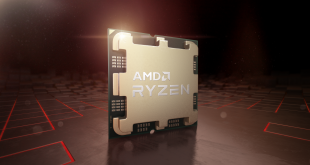Last year IBM established the OpenPower consortium and opened up Power8 processor specifications and architecture to its partners. The goal of the organization is to create an eco-system of Power8-based servers designed for future data centers and cloud computing. The first fruits of the collaboration may become available already early next year.
“The first third-party Power servers will be for cloud and high-end applications early next year,” said Ken King, general manager of OpenPower alliances at IBM’s systems and technology group, in an interview with PC World. Mr. King added that eventually the Power technology could also be used in lower-end servers.

For years the Power architecture and the Power processors remained proprietary IBM technologies used for high-end servers and mainframes. As the world is moving away from proprietary solutions to industry-standard x86 servers based on processors from Intel, it became impossible for IBM to popularize Power itself. As a result, it formed the OpenPower consortium (OPC) with the aim to build advanced server, networking, storage and GPU-acceleration technology aimed at delivering more choice, control and flexibility to developers of next-generation, hyperscale and cloud data centers.
IBM licenses the Power architecture and some other essential technologies to its allies from the OPC. Partners are required to contribute intellectual property to the organization. Essentially, IBM wants to create an alternative eco-system to Intel’s x86. IBM is not concerned that non-IBM Power-based machines will eventually be able to compete against its own high-end System-Z and other servers.
“It is about making Power relevant in the marketplace,” said Mr. King.
IBM, Google, Tyan, Nvidia and Mellanox are the founding members of the OpenPower consortium. Samsung, Altera, Micron, SK Hynix, Hitachi and many others are also members of the organization.

Since the Power technology is new for everyone outside IBM, the company faces an uphill battle in getting server makers to move to Power, according to Nathan Brookwood, principal analyst at Insight 64. Server manufacturers have invested a lot in x86 hardware and software, hence, they are pretty reluctant to move to anything new.
“The problem with computing systems on a shrinking user and application base is they go away. It happened to DEC Alpha, Tandem NonStop, it’s happened to dozens of systems,” said Mr. Brookwood.
Nonetheless, thanks to the fact that so many companies have already joined the OpenPower consortium, the Power technology may have a chance.
“To ensure the longevity of Power8 is to get other people to use it and develop on it,” said Mr. Brookwood.
Discuss on our Facebook page, HERE.
KitGuru Says: Keeping in mind that several large consumers of servers – Amazon, Google, Facebook, Microsoft, etc. – want to have fully-custom (or nearly fully-custom) hardware, including microprocessors, IBM Power should have a chance to become widespread. ARM architecture (which is available for licensing too and which can power custom system-on-chips) will probably be capable to address only low-end server space, whereas Power can offer high performance and an opportunity to customize.
 KitGuru KitGuru.net – Tech News | Hardware News | Hardware Reviews | IOS | Mobile | Gaming | Graphics Cards
KitGuru KitGuru.net – Tech News | Hardware News | Hardware Reviews | IOS | Mobile | Gaming | Graphics Cards


